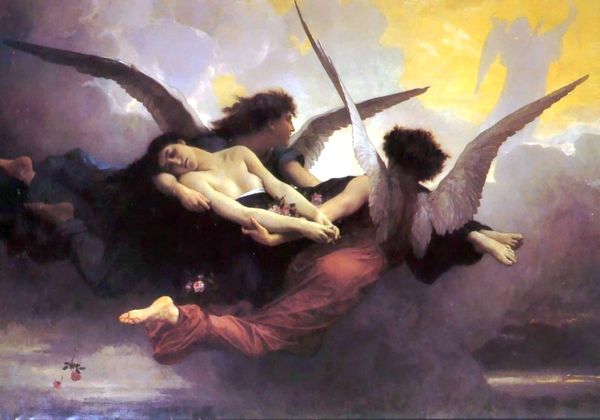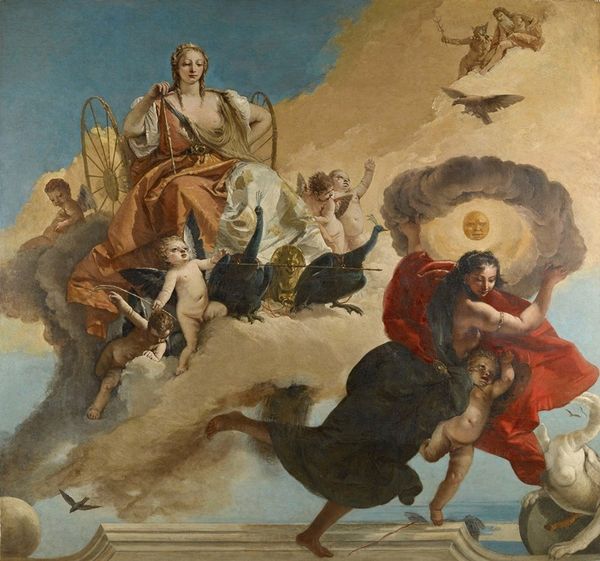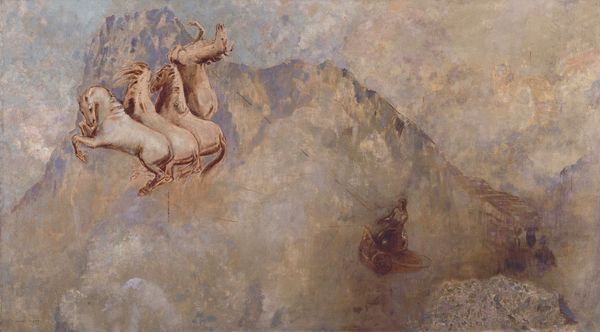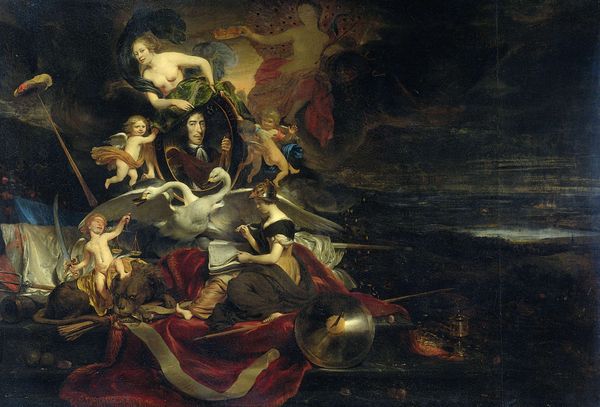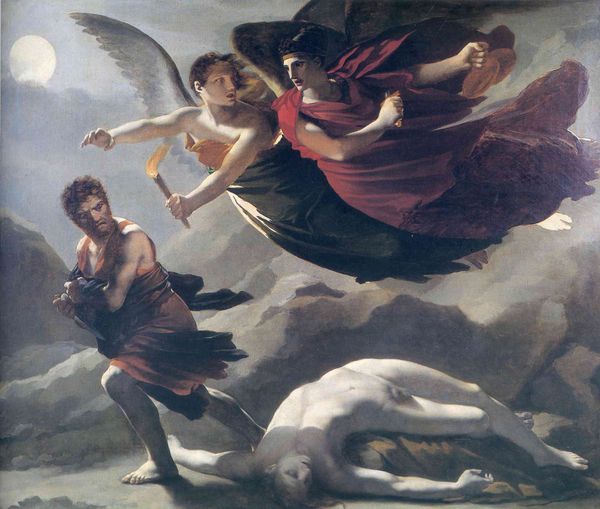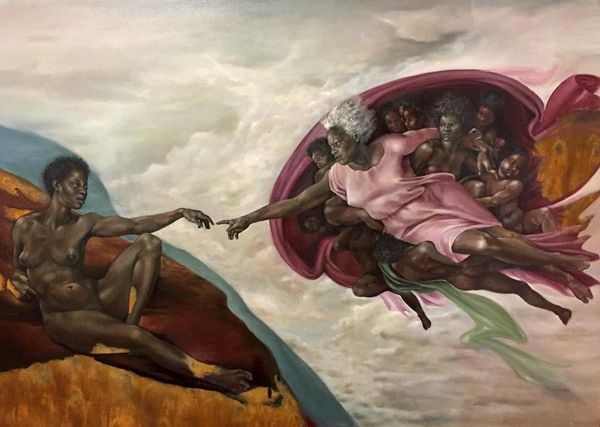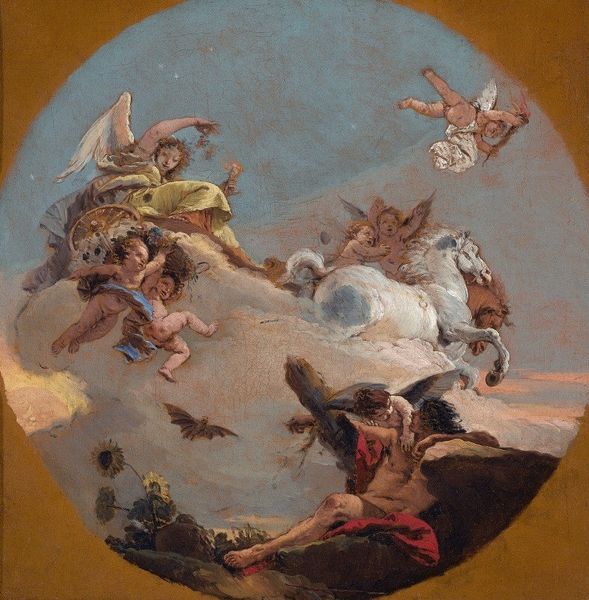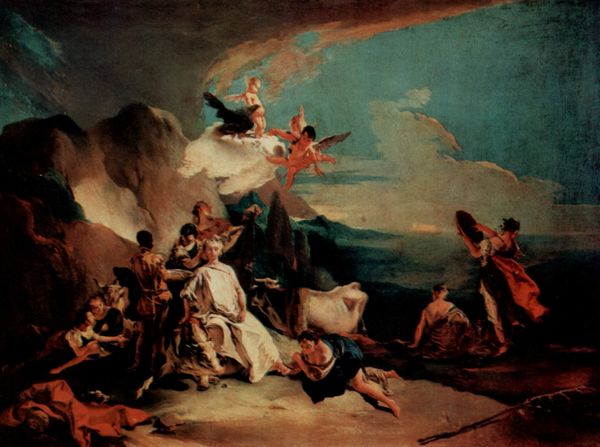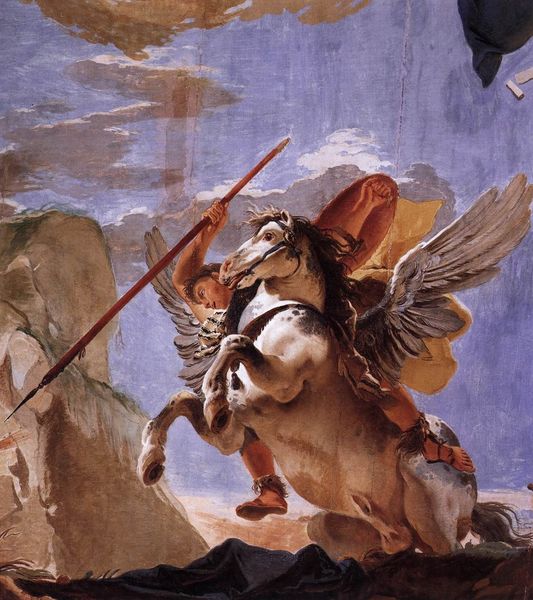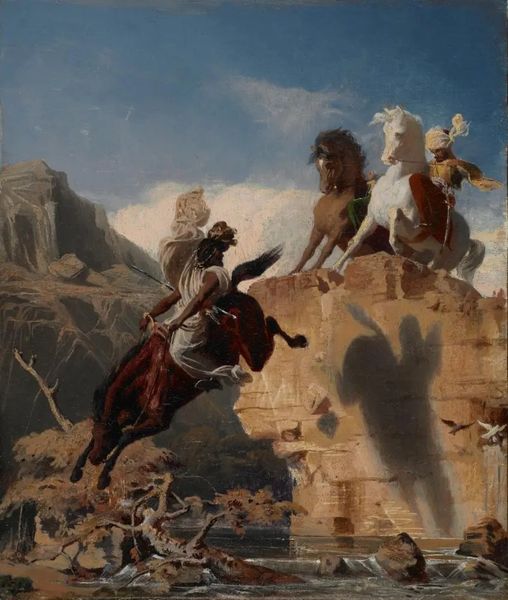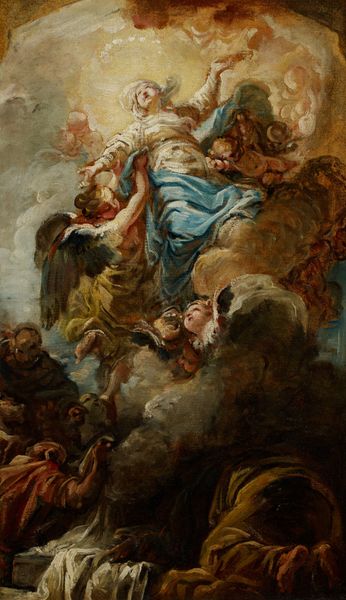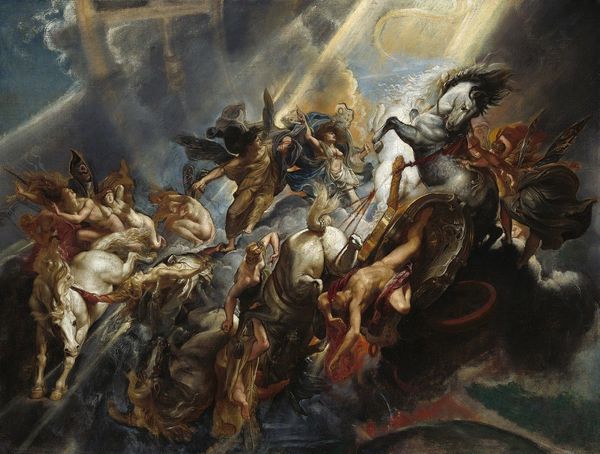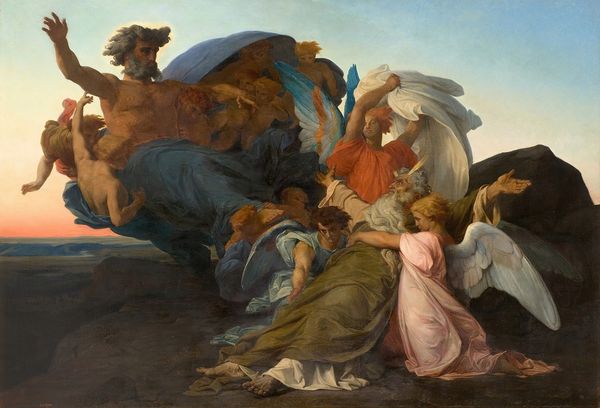
painting, oil-paint
#
portrait
#
allegory
#
painting
#
oil-paint
#
figuration
#
oil painting
#
romanticism
#
history-painting
Copyright: Public Domain: Artvee
Curator: This oil painting, titled "St. Catherine of Alexandria", was created in 1839 by Henri Lehmann, a pivotal figure in the transition from Romanticism to Realism. Editor: My initial feeling is one of ethereal ascent. There's this upward sweep, figures carried heavenward against a dramatic skyscape. The romantic undertones are strong, right? A vision of idealized virtue ascending to divine glory, removed from worldly concerns. Curator: Indeed. Consider the symbols. Saint Catherine is often depicted with the wheel, a reference to the instrument of torture from which she was miraculously saved, and with a sword signifying her martyrdom. Editor: Yes, but look how Lehmann renders them! The broken wheel, almost discarded, feels more like a weight being shed rather than an instrument of horror. The entire scene reframes suffering and violence into a peaceful transition. Does this sanitization of female martyrdom erase or uplift her power? Curator: I interpret it through the lens of apotheosis—a human transformed into a divine being. The angels carrying Catherine, the musical accompaniment, even the pastel colors, they all contribute to the iconography of ascension. It is a representation of spiritual triumph. Editor: But triumphs for whom? Historical paintings, like this, functioned as moral instruction, frequently promoting passive feminine ideals. Who controlled the narrative then, and what are we, as viewers, meant to internalize today? We need to interrogate the dynamics of representation within the historical context of 19th-century academic painting. Curator: I appreciate you framing it through a modern, theoretical lens, but I also believe in acknowledging the psychological comfort these archetypal images can provide. Representations of sacrifice, devotion, and ultimate transcendence offer potent visual allegories across centuries, and speak to enduring spiritual longings. Editor: I concede to that. It reminds us that even highly codified artistic traditions are always negotiated between the powerful institutions that endorse and celebrate certain values, and viewers whose readings continue to shape and subvert such narratives across time. Curator: Beautifully said. The painting continues to speak, but our interpretations are never fixed, so even familiar imagery retains some vital newness.
Comments
No comments
Be the first to comment and join the conversation on the ultimate creative platform.

